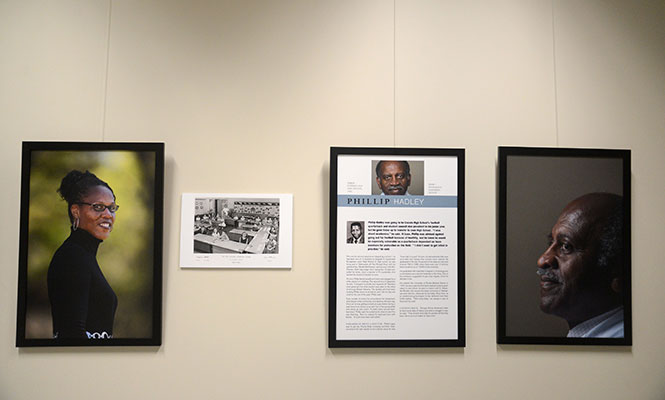‘They Led The Way’ exhibit set to open at Kent State
“They Led the Way”, an exhibit created by Journalism and Mass Communication professors Ann Schierhorn and David LaBelle, is on display in Franklin Hall with an opening reception to be held Monday, Jan. 27, 2014. The exhibit is about eight students who took part in the desegregation of schools in Leon Country, Fla., 50 years ago.
January 23, 2014
An opening reception of the photo exhibit titled “They Led The Way,” the story of the desegregation of schools in Leon County, Fla., will be held on Monday in Franklin Hall. The exhibit is the result of two years of professor Ann Schierhorn’s sabbatical work.
“My idea was that the eight people would tell their stories to form a mosaic of what that experience was like so people would understand it,” Schierhorn said.
The exhibit, which features Schierhorn’s research and photographs by professor Dave LaBelle, will open Monday at 4:30 p.m. in the First Energy Auditorium.
Schierhorn and LaBelle will be speaking at the event, as well as Thor Wasbotten, director of the School of Journalism and Mass Communication, and Mahlon C. Rhaney, Jr., one of the students who participated in the desegregation.
‘They Led The Way’ is an exhibit about the eight students who desegregated schools in Leon Country, Fla., 50 years ago,” said Stephanie Dane Smith, interim coordinator for marketing and media said. “It’s a gallery opening, and then it’s an evening with the people who put the exhibit together and one of the students themselves.”
Schierhorn, who was a student in Leon County Schools at the time, said this was a story she always wanted to tell. In 2011, she proposed her idea of doing sabbatical work on the subject to fellow faculty members. LaBelle said the story immediately caught his attention.
“I told her, ‘If you do this, I wouldn’t mind helping you.’ It’s the kind of project I believe in,” LaBelle said. “This is Ann’s baby; she’s just letting me hold it.”
During the two-year project that LaBelle called both “wonderful and challenging,” he and Schierhorn were able to contact all eight students for the project. In September 2013, their work was displayed in the John G. Riley Center/Museum of African American History and Culture in Tallahassee, Fla., where it will remain until February 2014.
Schierhorn said she hopes that with the opening of the exhibit the audience will see a different side of desegregation than what is taught in a history class. While court rulings and school board decisions were constantly reported then, and violent reactions to civil protests are taught now, she wants the audience to see the “human” side of what was happening.
“I don’t think people know about the quiet sacrifices because Tallahassee was not a town that had violence,” Schierhorn said. “But it was a town where people sacrificed a great deal to desegregate the schools and other institutions. So I want people to come to the exhibit to understand what that was like: that sacrifice.”
For more information on the “They Led The Way” exhibit, go to www.ledtheway.org.
Contact Heather Inglis at [email protected].

























